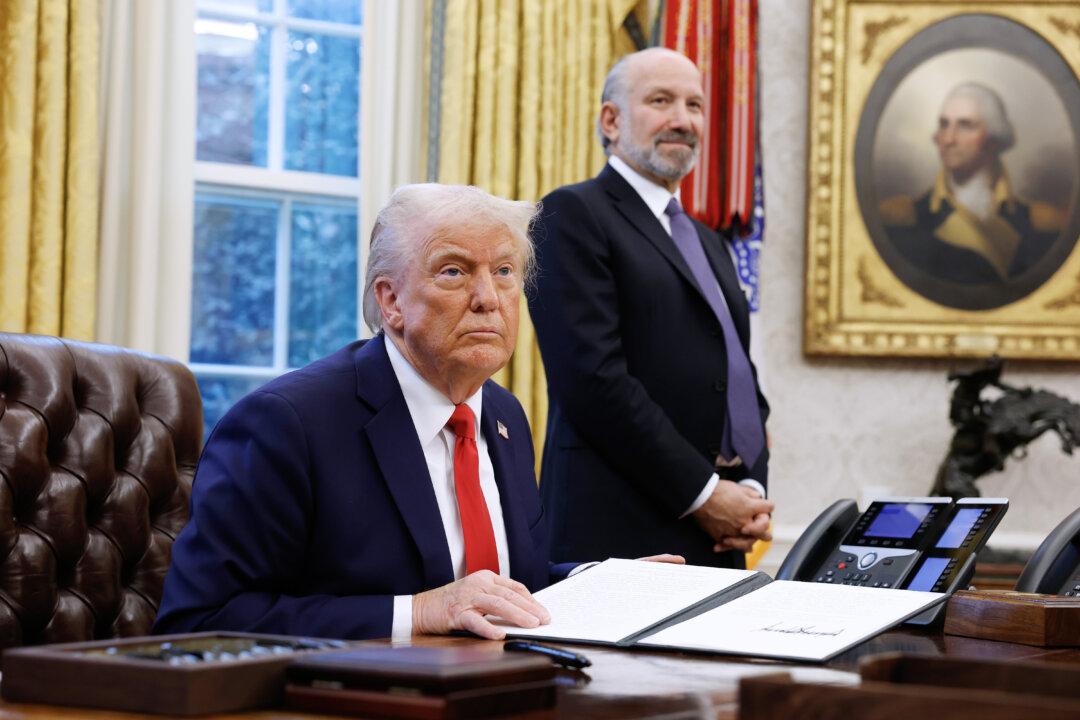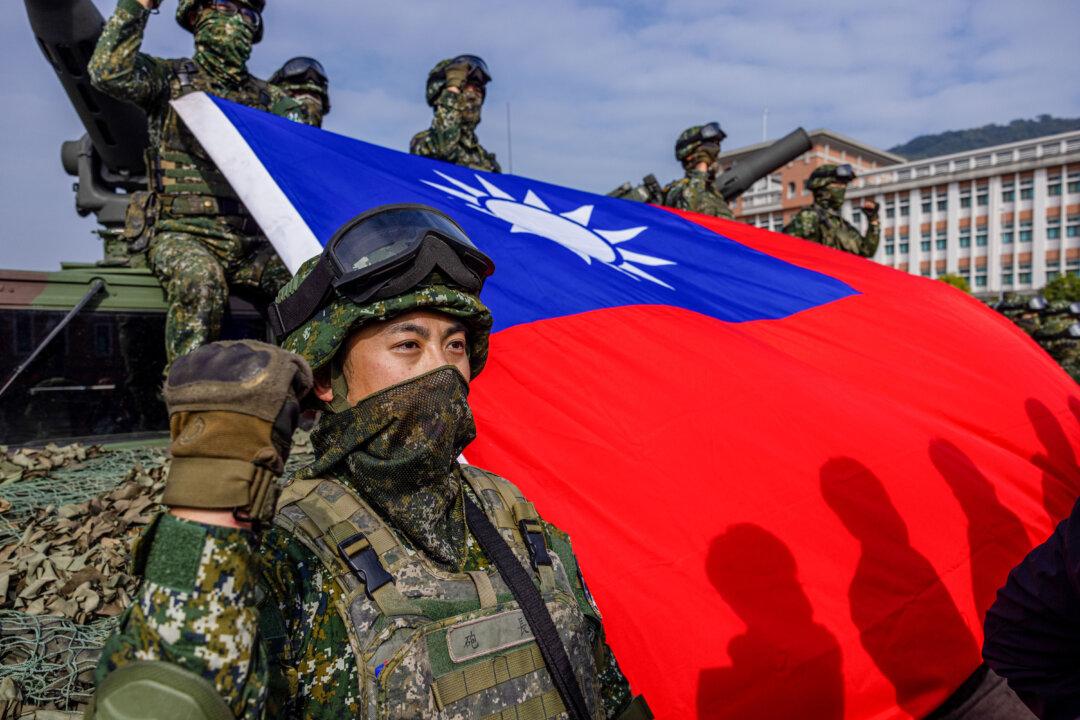Countries go to war for many reasons—but to grab semiconductor factories would be a first.
However, China would be no less keen to seize Taiwan if the island didn’t have a single semiconductor factory.
From Beijing’s perspective, there’s plenty of upside to taking Taiwan by force or by throttling it and bringing it under mainland control.
Strategic Terrain: Breaking the First Island Chain
Taiwan has what real estate agents say matters most: location, location, location. Geography matters.Taiwan sits in the middle of the so-called first island chain that runs from Japan southward through Taiwan and the Philippines, and onward to Indonesia and Malaysia. U.S. defense concepts call for defending along the first island chain.
Viewed from the Chinese mainland, the first island chain is a barrier that blocks easy access to the Pacific Ocean for Chinese naval and air forces. Chinese forces need to pass through a handful of narrow (and easily defended) straits or pass over potentially hostile territory.
So if it occupies Taiwan, the PLA has a lodgment smack in the middle of the U.S. (and allies) forward defense line that bottles up the Chinese military. Control over Taiwan and its airfields and ports would allow the PLA both freedom of movement and extended range into the Western Pacific and beyond.

Additionally, it would give Beijing increased leverage over other countries in the region. Taiwan is a splendid location for interdicting sea lanes through the South China Sea, a region that China claims as its own and through which much of Japan’s trade flows, including vital energy imports. It would also make South Korea even more vulnerable.
By holding Taiwan, China would be in a position to prevent ships from other nations from using the South China Sea. It could even charge administrative fees for the privilege of passing through “its waters.” It could also massively expand its air defense identification zone, giving it leverage over air as well as sea.
Sticking It to the Japanese
Taiwan’s fall would allow China to teach Japan a lesson—and it’s keen to do so. One can see that in action in the East China Sea around Japan’s Senkaku Islands—islands also claimed by China (and Taiwan). Since 2012, Chinese naval and coast guard ships have gradually increased their presence in the area. Japanese forces have responded to Chinese incursions but haven’t initiated a shooting incident.However, Japanese naval and air forces are increasingly overmatched as Chinese ships and aircraft appear more often, in greater numbers, and for longer periods of time. The Japanese are holding on and are also deploying Ground Self-Defense Force anti-ship missile units and air defense systems to the Nansei Shoto (Ryukyu Islands) to bolster their southern defense line.

The Japanese are finally showing signs of cooperating with U.S. forces to defend Japan’s southern territory, but it’s late in the day.
With Taiwan in hand, China will have effectively outflanked Japanese defenses in the Nansei Shoto and would be positioned to dominate the East China Sea and seize Japanese maritime and island territory.
And once PLA submarines, ships, and aircraft start operating regularly east of Japan’s main islands, Japan would also need to defend its eastern approaches for the first time since 1945.
Eyeing the Second Island Chain and Beyond
China isn’t just looking east; it’s looking south and southeast as well.From Taiwan, with some effort, the PLA can drive into the heart of U.S. “second layer” defenses in the Central Pacific—and even push into the Southwest and South Pacific. China doesn’t have any military bases or access locations in the region and has only made modest military forays into the area.
However, Beijing has laid the groundwork with 30 years of political warfare, economic and commercial inroads, and physical presence, including scoping the seas and ports via its commercial and fishing fleets. And at the same time greasing the way via elite capture.
Before too long, the PLA will have bases in the region. Chinese military access will provide the regime with options for pressuring U.S. allies, including Australia.

Demolishing the US Protective Blanket
Despite the breathtaking Chinese military expansion over the past 30 years, it was possible for some in the region (and for many in America) to believe the United States was still the foremost military power and could defend itself and its friends. There was also an implicit belief that the United States would save Taiwan.But if Taiwan falls to communist China, the entire dynamic will be altered. Beijing will have demonstrated that it alone has the power—and the will—to dominate in Asia.
Consider what a regional nation will see in its neighborhood after the fall of Taiwan. China’s military will be seemingly everywhere—including backing up China’s huge fishing and maritime militia fleets. It will be intimidating.
- The vaunted U.S. military couldn’t, or wouldn’t, stop Beijing.
- Fear of economic and financial retaliation didn’t stop Beijing.
- Fear of America’s nuclear weapons didn’t stop Beijing.
- The United States and its allies couldn’t stop Beijing from taking—by force or bullying—democratic, independent, U.S.-friendly Taiwan, and subjugating its 24 million citizens.
But maybe the shock of Taiwan falling will concentrate minds and drive nations closer to each other and/or to the United States for self-preservation? Perhaps.
Though it’s more likely the concrete and nearby evidence of Chinese power will drive regional countries to cut the best deal they can with China in hopes of being mostly left alone or not being treated too harshly by Beijing.
Most of Asia will turn “red,” and quickly.
Japan and Australia might hold out, but they will be quaking, and the degree of compliance to China will be a constant issue—egged on by well-funded Chinese political warfare. And India might decide it needs new friends.
Beyond the Indo-Pacific, every other country will take note as well.
So if taking Taiwan allows China to push the United States out of Asia and knock it off its perch as the world’s leading nation, Xi Jinping might be sorely tempted to pay whatever price is necessary. Remember this is a leadership that has proven willing to do things that could seem to American minds like irrational self-inflicted economic wounds—think of what happened to Hong Kong or Jack Ma—if it assessed it would benefit its own relative position.
Given the stakes, semiconductors don’t matter much in the equation.





